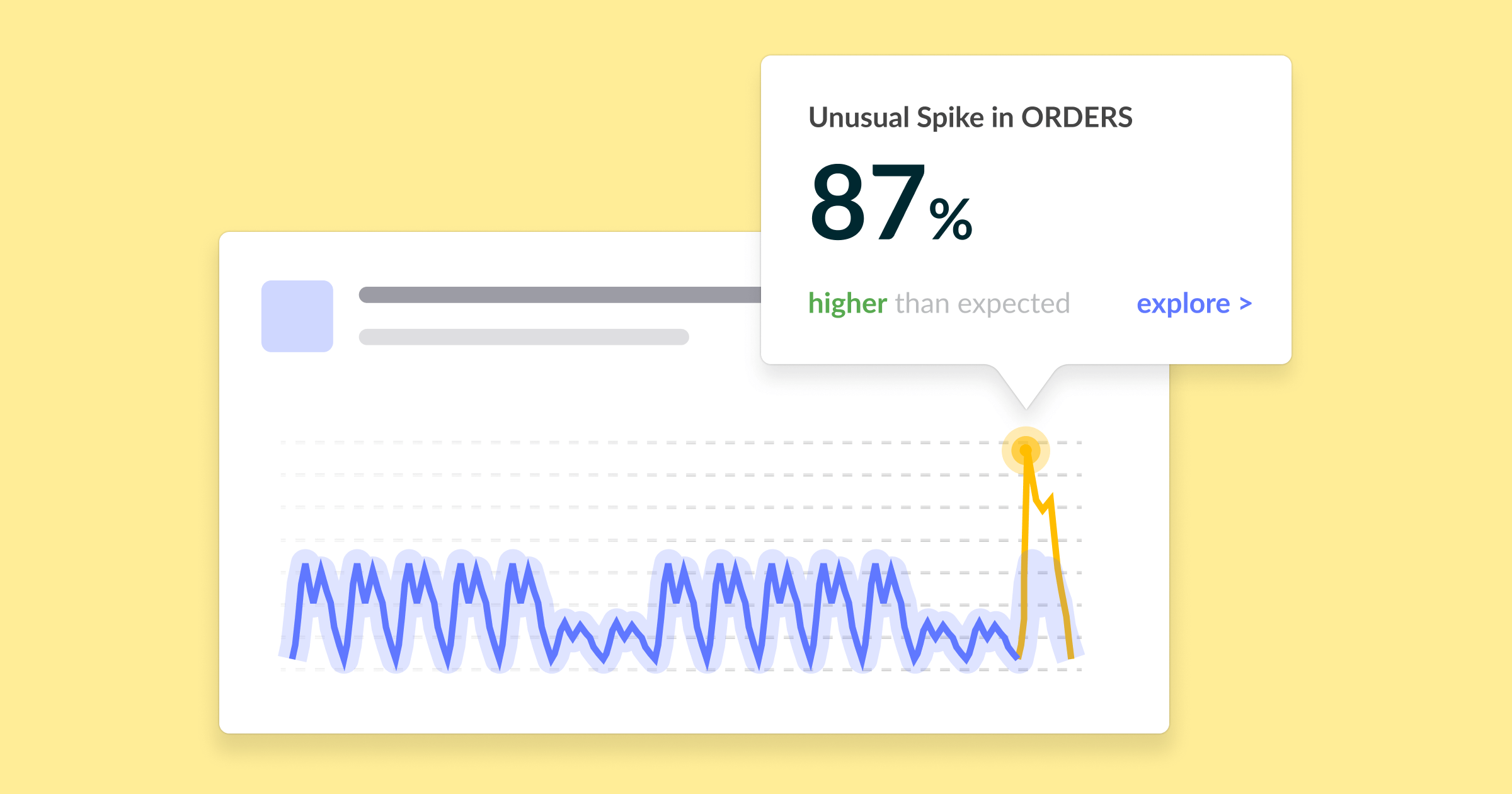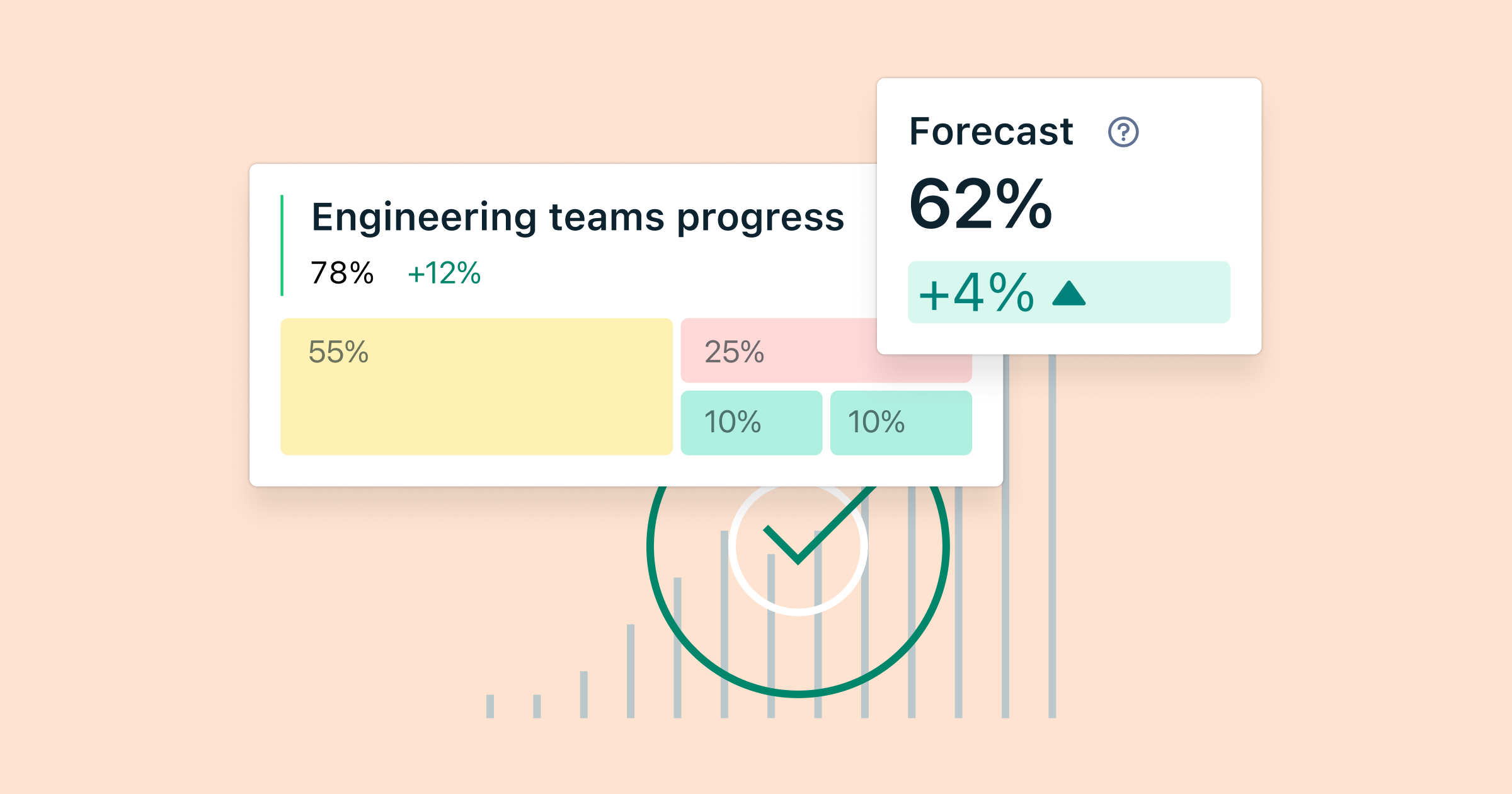Quantive is now part of WorkBoard. Get to know WorkBoard:
The days of ruminating on decisions for weeks or months are no longer an option. As executives, you must tackle challenges with unprecedented speed — assessing, planning, executing, evaluating, and adjusting decisions on the fly. This can get overwhelming, especially in industries where data floods in and decision-making processes are complex.
Not all hope is lost, though. The rapidly evolving business landscape has its silver linings, including using AI for decision-making. AI can drive decision-making by tailoring insights and recommendations to your business’s information. As such, you can use it to streamline decision-making and take action based on real-time information, not just data.
In this article, we’ll take you through the ‘what’, ‘why’, and ‘how’ of using AI for decision-making and strategy management, covering:
- Why executives need to change their decision-making approach and pace
- Current challenges in executive decision-making
- Why executives should embrace AI for decision-making
- How AI helps solve executive decision-making challenges
- The consequences of delaying AI adoption
- How to embrace AI for executive decision-making
Why executives need to change their decision-making approach and pace
Evolving executive decision-making is more critical than ever. Market dynamics are shifting rapidly, with the pace of running a business increasing rapidly due to:
- Changing customer expectations: The digital-first mindset and demand for convenience, personalization, and speedy responses redefine customer expectations.
- Globalization: Competition is increasingly global, with cultural differences, new legal requirements, and geopolitical risks altering market dynamics.
- Cyclical technological disruptions: Rapid innovations demand quick adaptation and strategic execution.
Yet, executive decision-making struggles to match the pace of business acceleration. This is despite organizations drowning in data and more than $29 billion being spent on business intelligence yearly. McKinsey’s Global Survey found that only 20% of respondents believe their organizations excel at decision-making and quick change management with a majority stating that the time they devote to decision-making is ineffective.
“For managers at an average Fortune 500 company, this could translate into more than 530,000 days of lost working time and roughly $250 million of wasted labor costs per year.”
— McKinsey
But why are executives struggling to make informed decisions at the required pace? What makes informed decision-making such a time-consuming and challenging feat?
Current challenges in executive decision-making
Rigid decision-making process
The executive decision-making process hasn’t evolved much. It’s often a slow cycle of data collection, meetings, and report reviews. This becomes inefficient and ineffective when you need to make rapid adjustments based on changing market dynamics — which often leads to delayed and ill-suited decisions.
To make things more complicated, these inefficiencies are compounded internally, as organizations often progress faster than executives can keep up with. Consequently, executives such as yourself must avoid becoming bottlenecks in the decision-making pipeline while still retaining ownership of strategic choices.
“If you’re good at course correcting, being wrong may be less costly than you think, whereas being slow is going to be expensive for sure.”
— Jeff Bezos
Data overload
Data is a goldmine, but its volume can quickly become a double-edged sword. As executives, you must not only oversee the continuous influx of data, but also discern its relevance and applicability.
Without context, an abundance of data isn’t worth much.
While you may have all the individual pieces on hand, not knowing where they fit, what they represent, or what the complete picture should look like can leave you disoriented.
An overload of wrong, misinterpreted, or duplicated data can lead to decision paralysis, data mistrust, a reliance on outdated information, and ineffective choices. In fact, a Salesforce study revealed that 41% of leaders lack an understanding of data because it is too complex or inaccessible.
"Finding a way to get a handle on the stream of data at their fingertips, to help businesses distinguish between the signal and the noise, is a crucial first step."
— Seth Stephens-Davidowitz
Misinformation and poor data quality
As the bedrock of all strategic decisions, executives must prioritize data integrity, accuracy, and reliability, ensuring data stays error-free. Neglecting this can lead to poor decision-making on your part — which happens more often than you’d think.
A CMGA study revealed that 80% of respondents made strategic decisions based on flawed information in the past three years. This can get pretty costly, with Gartner reporting that businesses waste an average of $15 million annually due to poor or faulty decisions.
Internal business complexities
Internal business dynamics add another layer of complexity to your executive decision-making capabilities. These include:
- Overlapping responsibilities: Decision-making roles are often unclear, with multiple individuals or teams sharing responsibilities. This can lead to confusion, delays, and conflicts during decision-making.
- Interdependencies: Choices in one area of the business affect others and, if navigated incorrectly, can negatively impact the broader organizational ecosystem.
- Individual biases: Personal beliefs can influence decision-making, sometimes leading to choices that align with individual views rather than the organization’s best interests.
Why executives should embrace AI tools for decision making
AI tools offer numerous advantages, allowing you to go beyond metrics analysis to utilize unstructured information in real-time, and at scale.
The right combination of artificial intelligence technologies can provide you with contextually relevant answers to executive questions, forecasts on impact, and even recommendations on what to do next.
The evolution, democratization, and convergence of the following technologies makes this possible:
- Natural language processing (NLP) understands human language, allowing you to automate tasks like customer support, data analysis, and sentiment analysis.
- Predictive analytics identifies patterns and connections in data for future forecasting, such as seasonality.
- Prescriptive analytics provides actionable recommendations by processing data, trends, and context.
- Generative AI processes vast volumes of information, understands concepts, identifies relationships, and generates insights on a much larger scale — and faster than any human can.
As these AI capabilities converge, businesses can better connect data, metrics, strategy, and operational activities for greater efficiency. This can:
- Free up 60-70% of employees’ time (McKinsey)
- Lower costs by 10% or more (Fortune)
- Grow and sustain a competitive edge (MITSloan Management Review)
- Boost productivity by 66% (Nielsen Normal Group)
- Reduce errors by 20% (Forbes)
However, we expect AI’s most significant impact to be on decision-making. AI’s ability to use things like predictive models to crunch vast datasets, spot patterns, and offer data-driven recommendations allows it to pull information from areas like sales, customer experience, and business strategy to create a stream of actionable ideas, knowledge, and insights that benefit you as decision-makers.
How AI helps solve executive decision-making challenges
AI systems offer a range of capabilities that address your main decision-making challenges as executives:
Pattern recognition and anomaly detection
You can apply machine learning techniques, such as deep learning models, to your business’s historical data to help you identify patterns, correlations, and anomalies across your business. Given the sheer volume and complexity of data, these may otherwise be invisible to human analysts.
Real-time information analysis
You can use AI to analyze incoming data and interpret up-to-minute information continuously. This empowers timely, well-informed decision-making, eliminating decision delays while keeping your business aligned with market fluctuations.
Data-driven recommendations and interactions
Machine Learning algorithms can help you analyze historical business decisions and extensive datasets to offer actionable recommendations and answer data-driven inquiries, demonstrating the power of AI for data driven decision-making. As a result, you no longer need manual reviews of voluminous reports or complex dashboards, countering information overload and the misinterpretation of information.
Automated alerts
By applying AI to fast-moving and critical information, you can receive timely alerts, with the context you need, on market trends, goal progressions, key business metrics, competitor activity, and more. These alerts facilitate prompt, proactive action, reducing decision bottlenecks and delays.
Faster time to insight
Generative AI accelerates time to get the answers you need by rapidly processing information, identifying patterns and concepts, and providing real-time humanly understandable insights with context. This eliminates the need for prolonged internal discussions, where answers can take days or weeks to materialize.
Spotting interdependencies
AI can reveal the interconnections between the work, output, and strategies of your departments, teams, and individuals. This helps you get an executive overview of how decisions and responsibilities are intertwined, allowing you to navigate the complexities of overlapping responsibilities and interdependencies within your organization.
Forecast generation
Leveraging insights from historical data, AI can help you comprehend forecasted scenarios. For example, it can extrapolate future product demand while considering variables like holidays and economic trends. This equips you with the foresight needed to pivot effectively and assess the possible outcomes of today’s executive decisions.
Scenario planning
AI can help you take forecasting to the next level with scenario planning, allowing you to assess various “what-if” scenarios. This enables you to explore potential outcomes of different executive decisions or variables, which proves essential for risk management and agile strategic planning amid internal complexities.
The consequences of delaying AI adoption
Forgoing the use of AI for executive decision-making can deprive you of crucial insights, capabilities, and agility — which can impact your business across multiple fronts:
- Delayed product and service development: Development can become sluggish, with prolonged ideation and iteration bottlenecking the process.
- Missed market opportunities: Missing out on emerging trends and changing customer preferences can erode competitiveness.
- Loss of top talent: You may struggle to attract, engage, and retain top talent, as skilled professionals are drawn to organizations that embrace cutting-edge technology.
- Increased operational costs: Manual handling of tasks and processes can lead to higher operating costs. For instance, you may need to expand your workforce to compensate.
- Revenue stagnation or decrease: Slower innovation and market entry can lead to stagnant or declining revenues.
“AI won’t replace humans — but humans with AI will replace humans without AI.”
— Harvard Business Review
How to embrace AI tools for executive decision-making
Given the perks of AI for decision-making — and the steep costs of not implementing it — leaders such as yourself must harness its advantages via a dedicated software solution, fully integrating AI in decision-making processes.
A solution that strikes the right combination of AI technologies provides the answers, context, and perspectives needed to make informed decisions, navigate challenges, and enable successful strategic choices. One such solution is Quantive StrategyAI — designed to work for executives, not the other way around.
Quantive StrategyAI
Quantive StrategyAI helps you transform decision-making by seamlessly connecting your business’s KPIs, its strategy, the work being done, and what’s happening with your customer. It provides you as executives with the answers and context needed for informed decision-making, eliminating the need for extensive report analysis or long fact-finding missions. This way, you’ll finally know what’s truly going on within your business.
Here’s how Quantive StrategyAI achieves this:
- Quantive StrategyAI provides an intelligent filter on what’s going on inside your business. By highlighting the most pressing business issues that require your full attention, you no longer have to try and discern the important from the mundane.
- Quantive StrategyAI offers a paradigm shift from the traditional report-based approach to business insights. It allows you to ask any question about your organization using natural language to receive real-time, context-driven answers — whether this is a complex, data-related question or just an ask for a piece of business information.
- Finally, Quantive StrategyAI makes sense of all your information and connects the dots between your business’s KPIs, operational data, strategy, and the work being done. Quantive StrategyAI helps you identify correlations, trends, and root causes that might be impossible or too time-consuming for humans to find on their own.
See how Quantive StrategyAI empowers your decision-making to drive meaningful progress

Transform your decision-making with AI
Executive decision-making has long been characterized by time-consuming processes that drain resources, time, and energy. AI is revolutionizing executive decision-making — delivering speed and efficiency, personalized insights, expert data management, bias control, strategic resource allocation, analytics, and so much more.
And we're not talking about some distant future. AI is already here, and it's here to stay.
At Quantive, we think forward-looking AI consulting tools such as Quantive Signals can shake up and transform how senior leaders make decisions. By freeing you from tedious manual data analysis and wild goose chases, you can connect the dots between your KPIs, strategy, people, and the work being done to drive organizational productivity and growth.
When you truly understand what’s happening within your business, you can reduce business risk, promptly bring about change, go to market faster, and shape a more effective organization. All this results in an unfair competitive advantage that enables you to stay ahead and cut out hiccups that slow down productivity and growth.
Ready to take executive data driven decision-making to the next level with AI powered insights? Let’s have a conversation to discover how we can help you harness the power of AI for decision-making.
Quantive empowers modern organizations to turn their ambitions into reality through strategic agility. It's where strategy, teams, and data come together to drive effective decision-making, streamline execution, and maximize performance.
As your company navigates today’s competitive landscape, you need an Always-On Strategy to continuously bridge the gap between current and desired business outcomes. Quantive brings together the technology, expertise, and passion to transform your strategy and playbooks from a static formulation to a feedback-driven engine for growth.
Whether you’re a fast-growing scale-up, a mid-market business looking to conquer, or a large enterprise looking for innovation, Quantive keeps you ahead – every step of the way. For more information, visit www.quantive.com.





